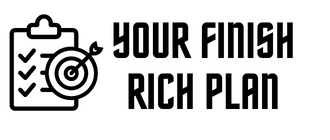Few people are in the situation where they can pay for their college expenses out of pocket. For most of us, paying for college requires using some form of financial assistance. The loan options that are available are numerous and range from federal loans to private loans. The main catch is that you have to have good credit to get the best deals. As a young adult, you might not have what is known as “good credit”, either because you haven’t had that long of a credit history to establish your credit (you then have what is known as a thin credit file), or you have taken a couple wrong turns regarding credit card use and have a not-so-perfect credit score.
If you’re a parent, you can see your son or daughter preparing for college and the cost associated with it, and very often student loans are the only way to finance their education. Yet, you want them to shoulder the cost on their own, since it’s their own future and they need to take responsibility for it.
Student Loans Without A Cosigner: College Loans For People With Little, Good Or Bad Credit
The good news is that you don’t have to forget about getting a student loan because you have little or no credit. You can even find student student loans with no cosigner, although you won’t have that much of a wide array of choices if you’re in that situation. As in most cases, it pays to do a good amount of research, and to use some persistence until you find what you’re looking for.
Here’s a rundown of what you need to look into:
- Do as much research as you can. The Internet makes this much less tedious than it used to be. Finding your ideal student loan will require that you perform Internet searches and sift through the results, filling out forms, and jotting down notes. Keep in mind that a credit check is not required for Stafford nor Perkins loans. Those are excellent starting points for traditional students.
- Complete the FAFSA (Free Application for Federal Student Aid). This is the very first step you should take, since the FAFSA is what will open the door to various federal student assistance options. FAFSA is for undergraduates and graduates enrolled in school half time or more. Completing the FAFSA not only puts you on track to receive loans, but if you qualify, it will also help you receive grant money (which is money that you don’t have to pay back). Plus, some states that offer assistance may use the information that you’ve provided on your FAFSA to determine whether or not you’re eligible for state assistance. You will need your parents’ income tax returns to complete the FAFSA, and if you’ve worked, you’ll need yours too
- Apply for the Stafford loan. Depending on who pays the interest on the loan while you’re a student, this loan can be either subsidized or unsubsidized. You might be especially interested in the subsidized Stafford loan: it’s for students that are in need; so if you have low or no income, no credit or bad credit, and no cosigner, there’s a good chance your loan application will be approved. The amount you will get will probably be small, but it’s much better than nothing.
- Apply for the Perkins loan. This is another federally-funded student loan, geared towards students that show the greatest financial need. It must be paid back under specific terms which are normally very good, such as a very low fixed interest (5 percent), and the payback terms are longer than the Stafford loan.
- If you’re a non-traditional student, you may be eligible for a few more assistance programs: there are many scholarships and grants available for students who fit a certain number of criteria, like being part of a minority, or being a student returning to college to pursue a degree. There’s a lot of them you may have never heard of, but that doesn’t mean the money isn’t available.
- Consider the Pell Grant. This program is gift aid, and is only available to students or prospective students who don’t have a bachelor’s degree yet. If you’re approved, the amount you get will depend on your individual need, your tuition cost, and whether or not you attend school part- or full-time. Expect to get between $200 and $2,200 from this grant.
- The FSEOG (Federal Supplemental Educational Opportunity Grant) is a gift aid program and is awarded to those with extraordinary financial requirements. You don’t need a cosigner. The amount awarded under FSEOG is based on a student’s financial needs and falls roughly into the same range as a Pell Grant. College students who acquired a Pell Grant are more likely to also receive a FSEOG Grant, so it’s a good idea to apply for both.
- Also consider private college loans. If you’re considering getting your student loans from private sources, such as banks or credit unions, odds are that they will ask that you have a cosigner. You might, though, bypass that requirement if you either have good credit, or accept a loan that carries a high interest rate.
Getting student loans without a cosigner is more than possible, no matter what your credit situation is. Remember that the government provides federal student aid to almost everybody, in an attempt to make college more affordable; those federal assistance options require no cosigner. They should be your first choices. Only after you have exhausted those options should you look into private college loans.

